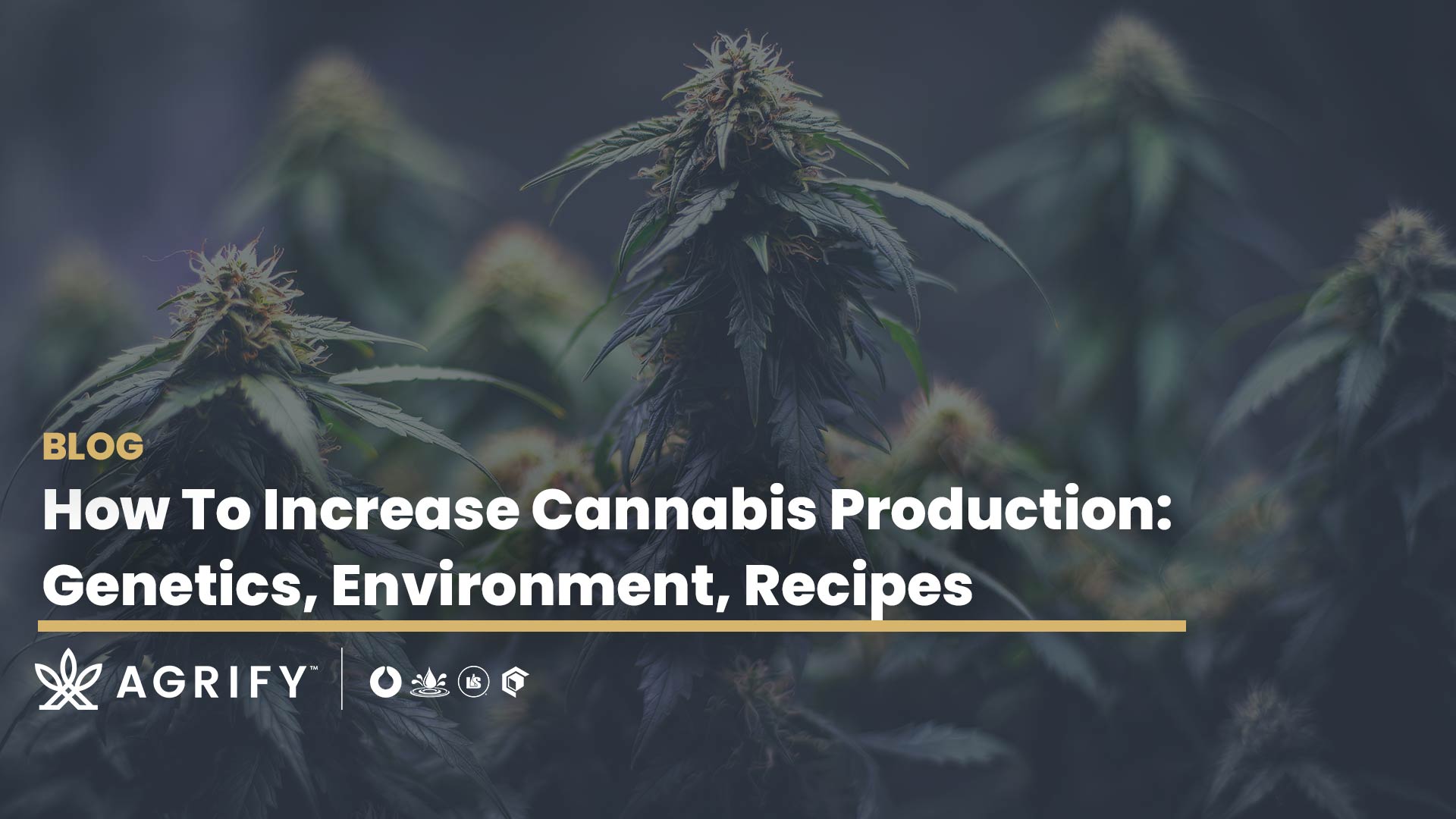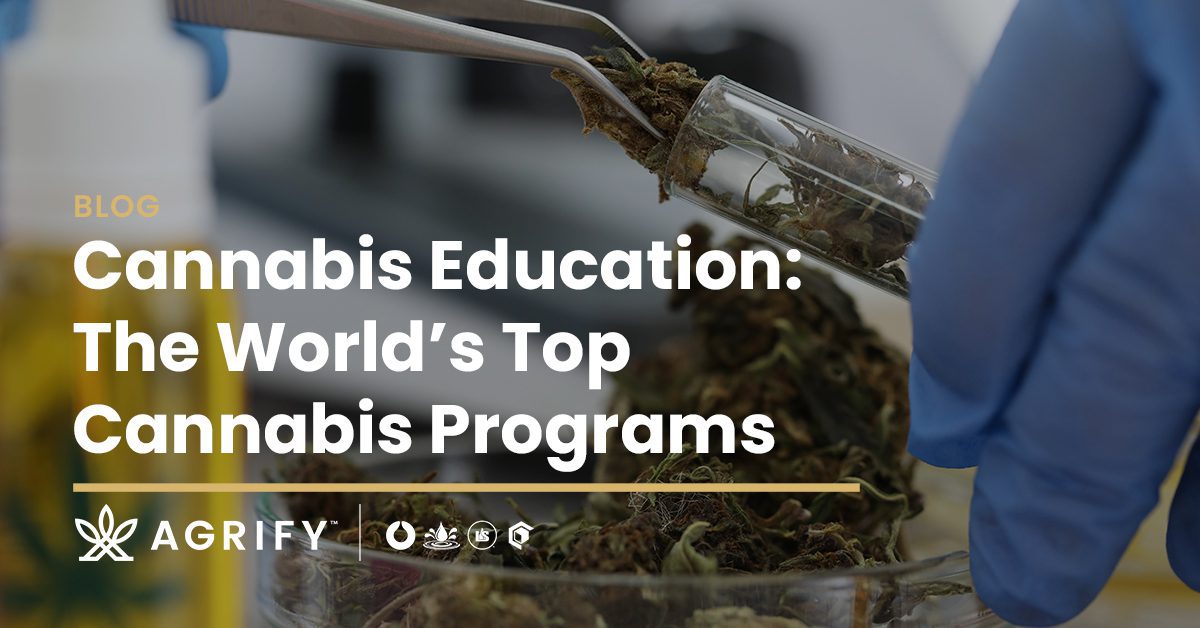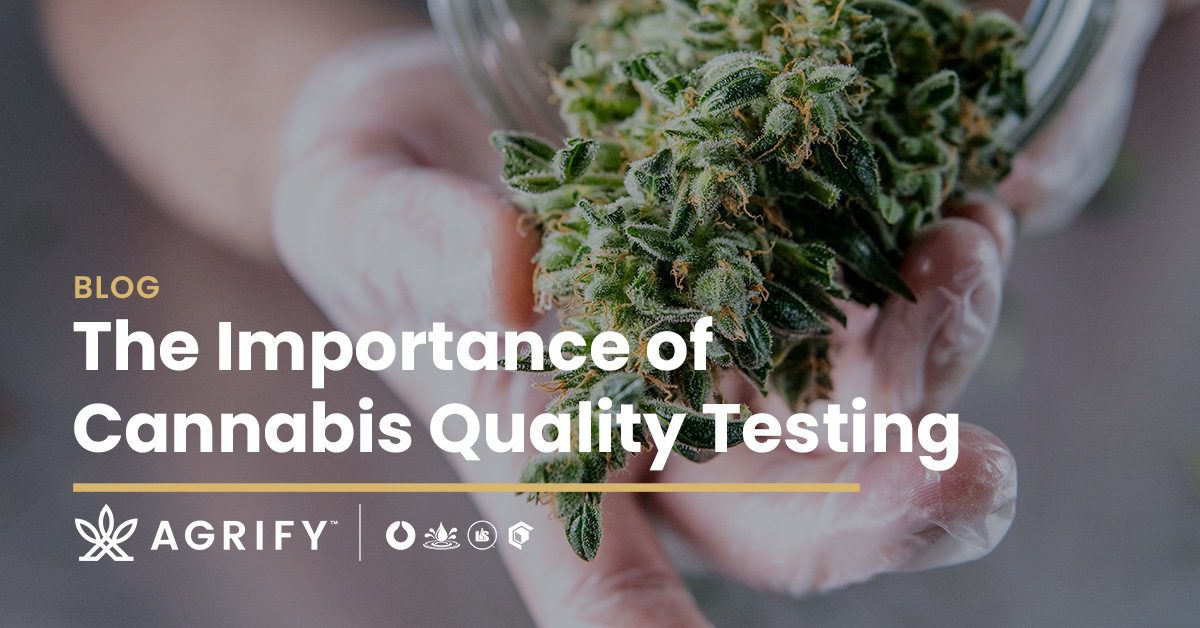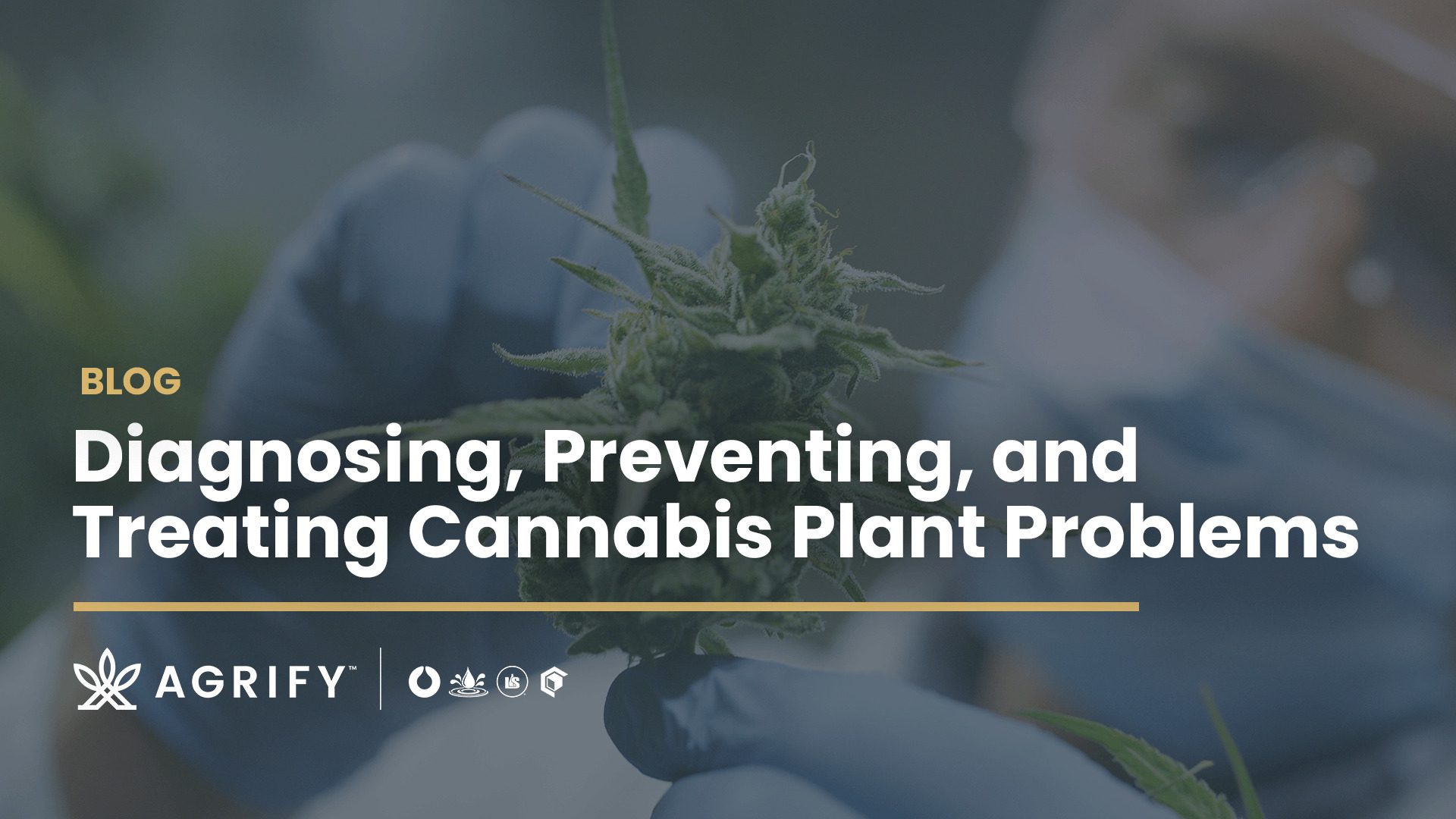
Cannabis plant problems? Diagnosing cannabis plant issues and diseases is a full-time job in a commercial setting. And whether it’s wilting leaves or powdery residue, the faster the issue is diagnosed, the less risk it is to production and profitability.
Of the dozens of diseases and problems you could encounter in the grow room, we focus on three of the most common below: drooping and wilting, brown or yellow leaves, and mold. First we’ll cover diagnosis tools, then provide tips for prevention and treatment.
Problem: Drooping or Wilted Plants
Leaves appear wilted; the issue will affect the stems and stalks in more severe cases.

Diagnosis:
This is a discouraging symptom that may indicate any number of issues. Often, drooping leaves on cannabis plants indicate something is off with the watering schedule: watering too much, too little, or too frequently.
If it’s to do with water, take a closer look at the leaves. They may begin to turn light green, yellow, or brown.
If it’s not related to watering, it may be a sign of root rot, particularly for hydroponic systems. You’ll have to open up the system to check the roots themselves, to see if they are slimy and brown.
Less commonly, it may be a temperature issue. Symptoms of a grow environment that is too hot or too cold are leaf color (purple, yellow) and problematic bud development.
Prevention and Treatment:
Most likely, wilting and droopy leaves are a sign of water stress, which means the treatment is quite simple: ensure you allow the substrate time to dry out between waterings.
You may also need to adjust how much water you give your plants at once. Growers often aim for 10 to 15 percent runoff.
If you are growing hydroponically, the wilting is due to bud rot. Check the system for light leaks and increase the oxygenation of the water. Your reservoir and lines will also need deep cleaning and sanitization post-harvest.
Problem: Brown or Yellow Leaf Tips
One of the most common cannabis plant leaf problems is browning or yellowing. The key to correct diagnosis is to identify exactly how the discoloration displays.
Take note of which leaves (young or old) are turning yellow and the location on the leaf itself. Is it near the tip? Is it the entire leaf? These observations can help you narrow down the cannabis plant problem.
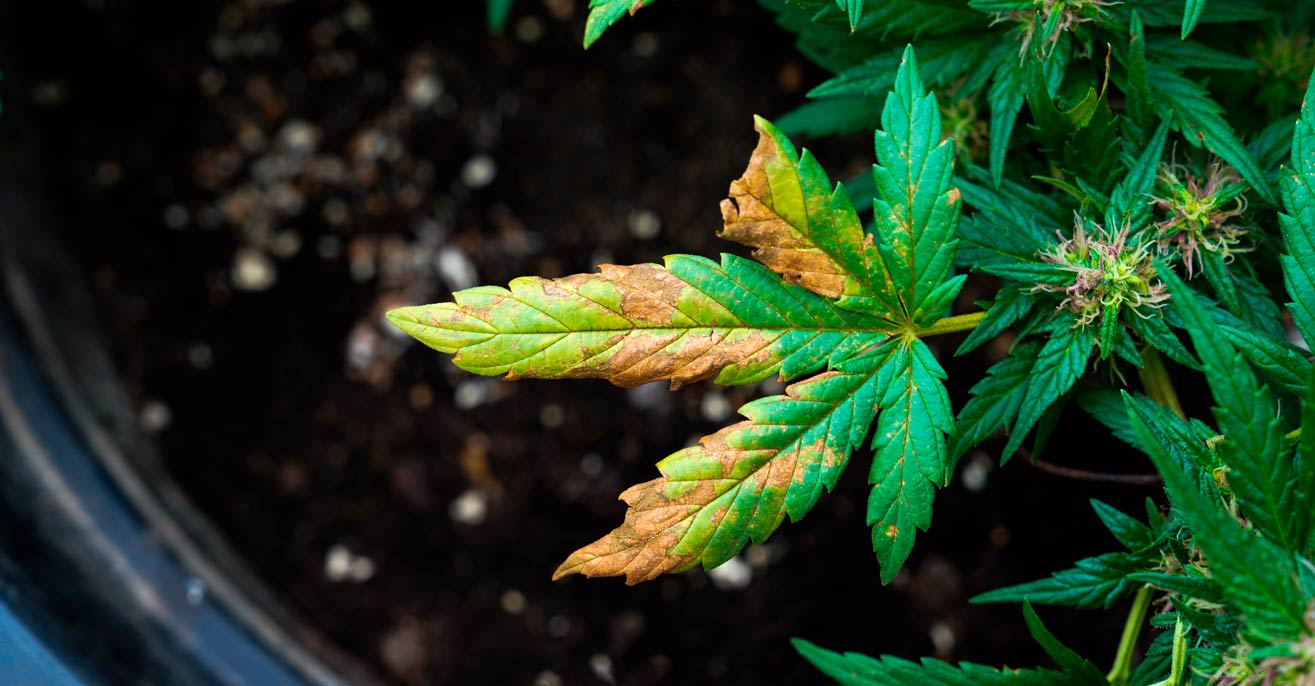
Diagnosis:
If it is only on the tips and edges, this may be light burn (also called light stress). This happens when plants are too close to the fixtures or the lights are too intense.
Leaf discoloration is also a key indicator for many nutrient issues. For example, if the leaves are brown, crispy, and curling under, this may be a potassium deficiency. On the other hand, if only the very tips look burnt, it is likely an issue called nutrient burn, where there are so many nutrients that the solution becomes toxic to the plant.
Another possibility is a nutrient deficiency. The leaves will turn yellow but, notably, the veins stay a dark green if there isn’t enough copper. A zinc deficiency has a similar effect, but the younger leaves start to turn yellow first.
Prevention and Treatment:
If the yellow leaves are just a symptom of light burn, the clear solution is to adjust the fixture hang height or lower the intensity.
If you suspect a nutrient imbalance, there may be a bit of experimentation needed to solve the issue. In some cases, nutrient deficiencies aren’t an issue with the nutrients but rather the pH level, which impacts nutrient absorption. Start by testing the system PH and get it back within the 5.8 to 6.2 range.
If this doesn’t solve the issue, you’ll need to dig deeper to determine what is off within your nutrient solution and make the necessary adjustments.
Problem: Mold or Powdery Residue on Leaves
An all too common marijuana plant disease starts with a powdery residue. But, again, location is everything when it comes to diagnosis. Take a closer look at where this powder or dust has appeared. It may even be necessary to use a magnifying glass or jeweler’s loupe to examine whether it’s mold or a tiny insect.
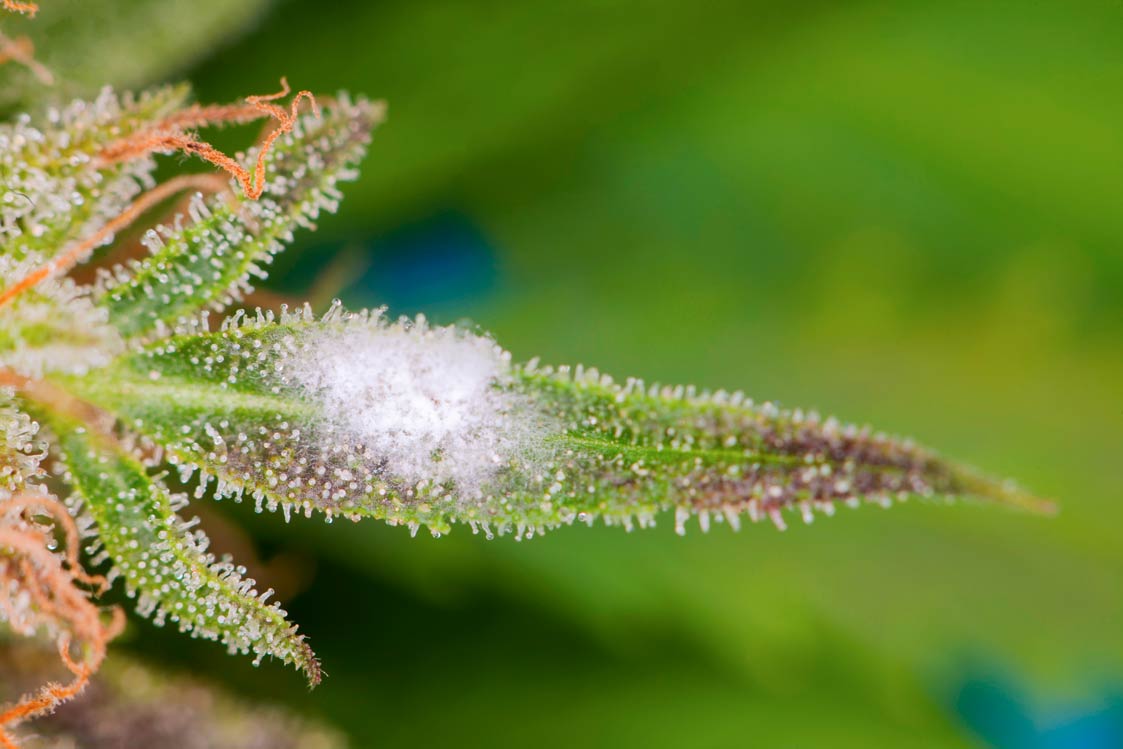
Diagnosis:
Generally, there are two mold-related marijuana plant diseases: powdery mildew and bud rot. Spread by near-invisible microscopic spores, they are challenging to prevent in any grow room.
Bud rot, as the name suggests, hits the flowers of cannabis. You’ll see the surrounding leaves start to turn color, and the bud turns brown and is rotten on the inside. It may even occur after harvest in the drying and curing rooms.
Powdery mildew is more likely to appear on leaves than on flowers. Look out for scattered dusty white spots, especially within the dense lower sections of your plant.
In some rare cases, what appears to be mold or bud rot is actually a pest infestation: mealy bugs. These tiny, white, furry creatures are best identified with a magnifying glass. Because of the sweet nectar they secrete, they may also increase the risk of the other two molds listed above.
Prevention and Treatment:
In cases of bud rot or powdery mildew, prevention is key. Ensure proper air circulation throughout the canopy, defoliate dense plants, and lower humidity levels. In mild cases, remove all damaged areas to prevent further spread. In more severe cases, you’ll have to remove the entire plant.
Mealybugs also prefer hot, humid environments, which means you may want to decrease temperature and humidity. First, remove all of the infested parts. Then spray your plants with an insecticide, neem oil, or mild soap. Repeat as needed.
Routine Crop Monitoring: Key to Solving All Cannabis Plant Issues
If you aren’t monitoring your canopy regularly (if not daily), you’ll only catch your cannabis plant problems when they’re too late to treat. Bud rot run amuck or extreme nutrient burns directly impact how plants develop and how much you can safely harvest.
The solution to preventing all severe marijuana plant problems is to inspect your cannabis plants regularly and thoroughly. Then you’ll have the time to treat and pivot if any early signs of pest, disease, or system imbalance appear.

Agrify Makes Canopy Checks Simple
Agrify’s Vertical Farming Units (VFUs) were designed to make regular crop monitoring easy for the plants and the people doing the work. With 64 plants split into two accessible levels, every single leaf is not just easily viewed, it’s also within arms reach.
Instead of trying to reach deep into a plant rack to see plants along the back wall, they are conveniently accessed from both sides by raising motorized curtains. Plus, unlike other racking systems, the plants are at a much more ergonomic height, making the task less arduous and painful for the people performing it.
The Agrify solution is intelligent, combining stackable VFUs with modular catwalks to remove the need for racks, separate grow rooms, and rolling benches — all without comprising production.
